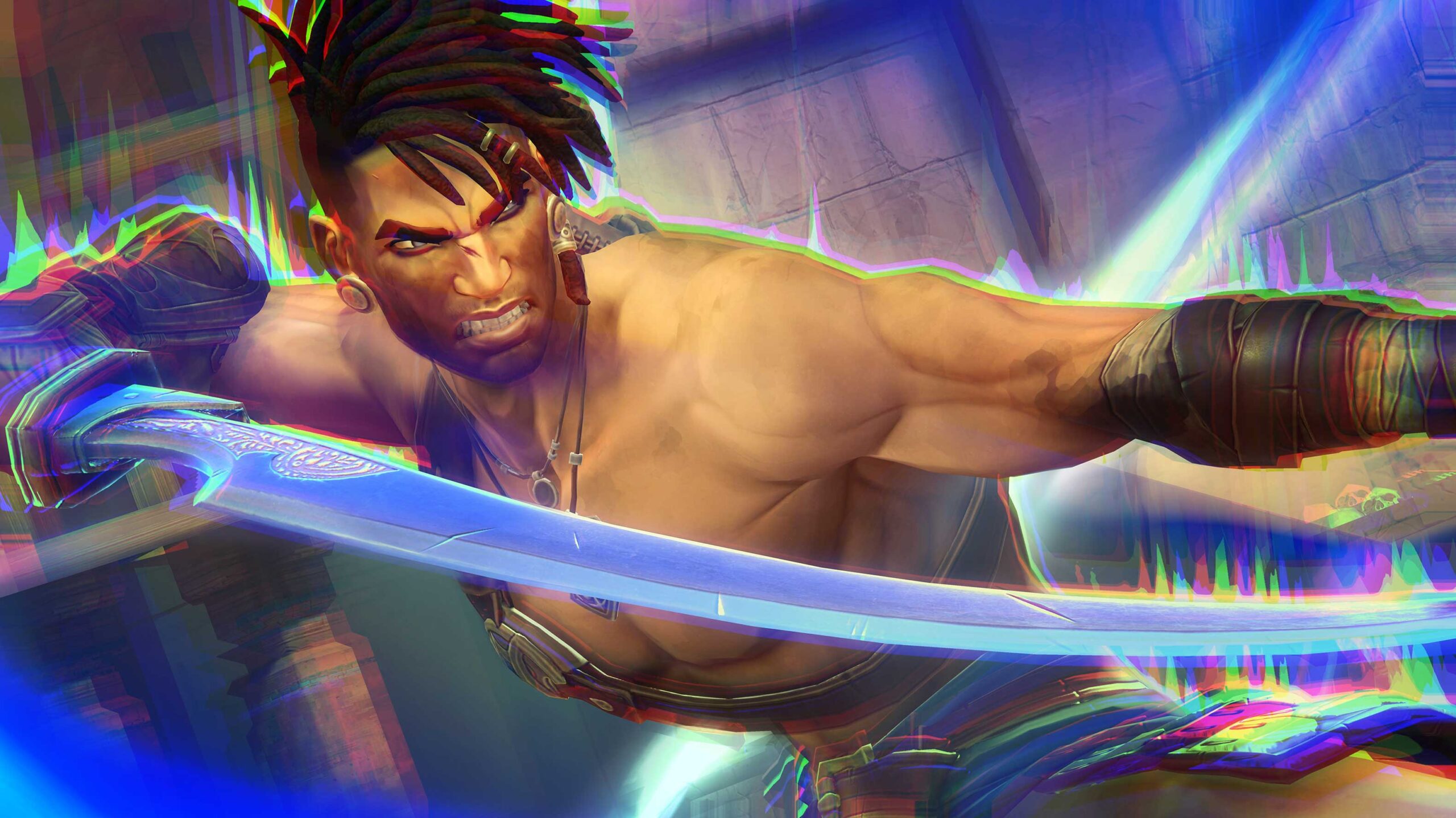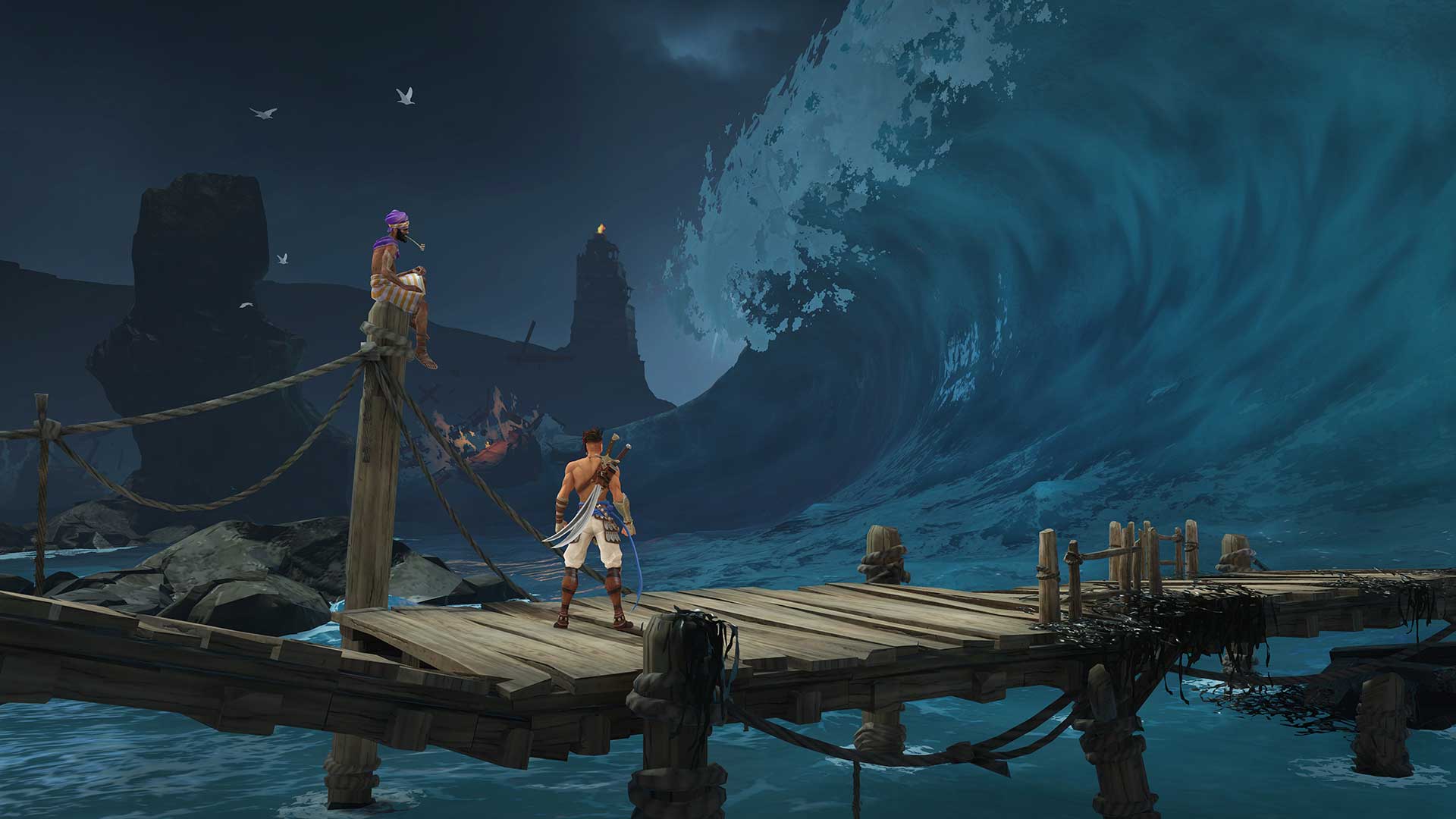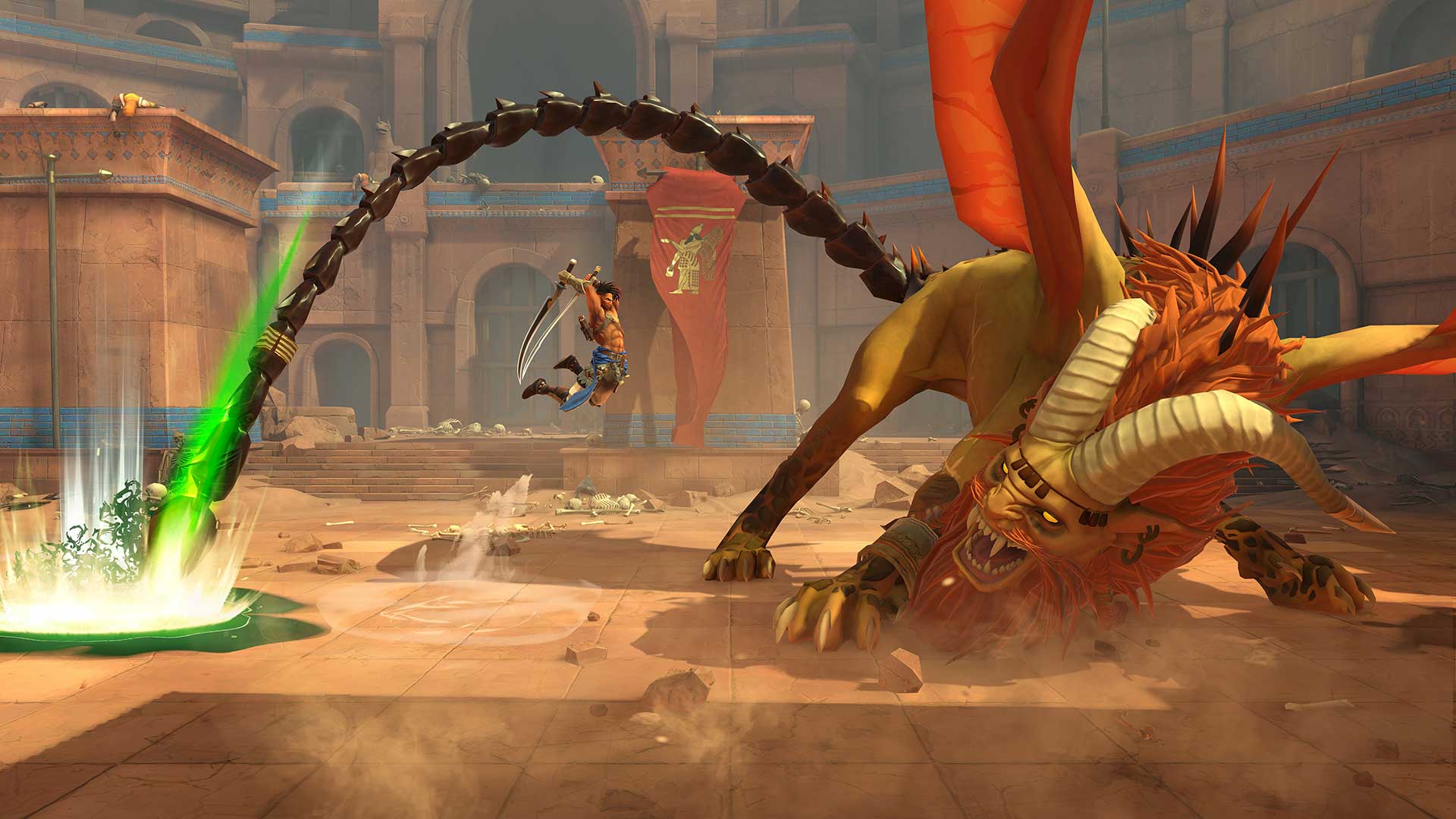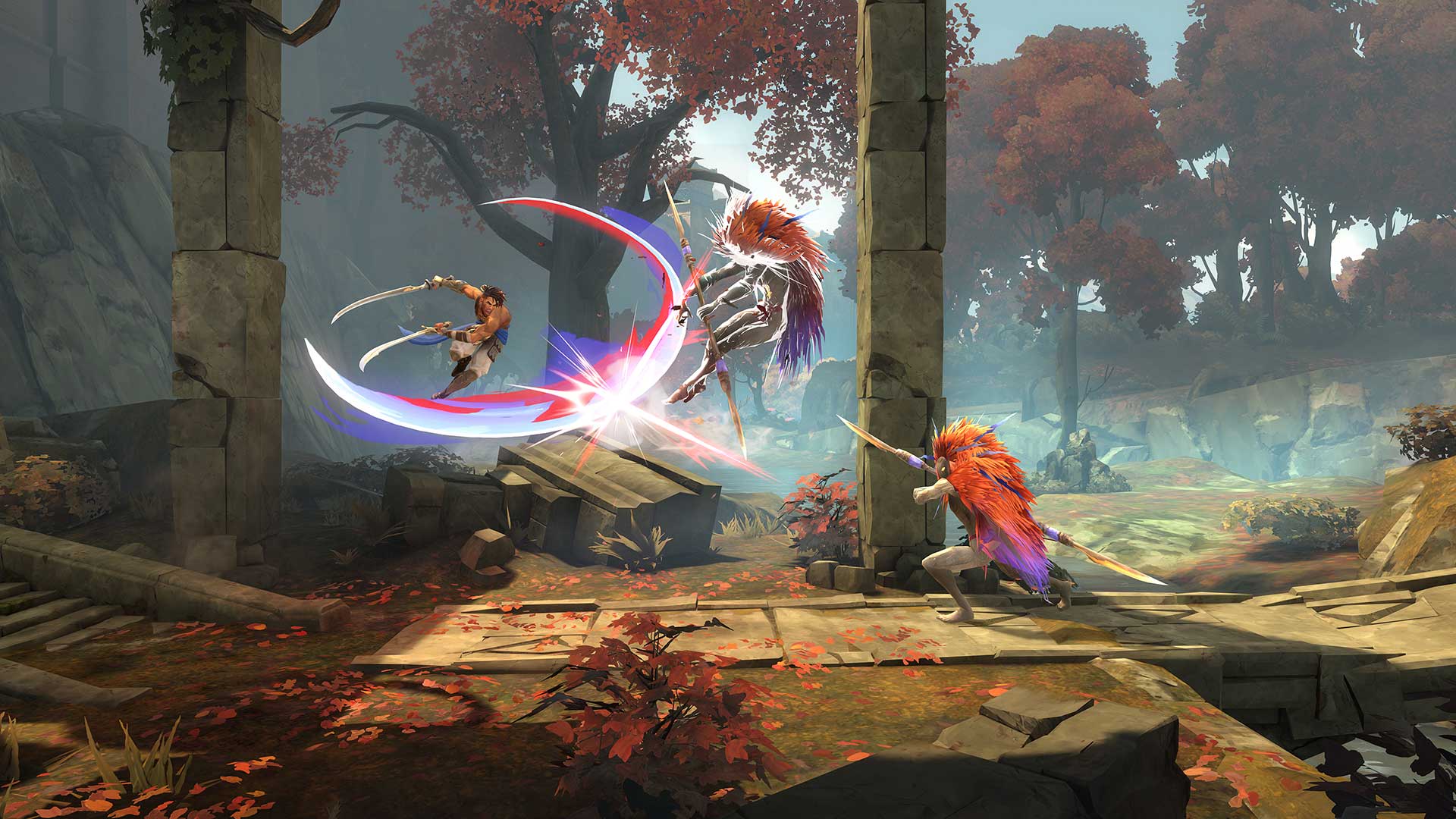
At Summer Game Fest (SGF) in June, I got to play a little bit of Ubisoft Montpellier’s Prince of Persia: The Lost Crown.
As the first major new entry in the long-running action-adventure series in well over a decade, I was intrigued. Quickly, I found myself digging the flashy visuals, snappy combat and intricate level design, and I soon named it one of my favourite games out of SGF.
But it was a relatively short demo, all things considered, and not one that fully indicated how well the moment-to-moment Metroidvania-style gameplay loop — or story, for that matter — would hold up over longer play sessions. A promising first showing, definitely, but I needed to see more.
 Now, after a recent preview event in Toronto focused on the first few hours of the game, I’ve gotten all of my questions answered, and I couldn’t be happier. Not only was this second outing pretty much everything I could have hoped for, but it was easily the most excited I’ve been for a Ubisoft title in years.
Now, after a recent preview event in Toronto focused on the first few hours of the game, I’ve gotten all of my questions answered, and I couldn’t be happier. Not only was this second outing pretty much everything I could have hoped for, but it was easily the most excited I’ve been for a Ubisoft title in years.
First and foremost, that boils down to the presentation and structure. With so many games pushing for photorealistic 100-hour open-world experiences nowadays, including those from Ubisoft, I find myself often getting burnt out. The Lost Crown, however, is a 2.5D sidescroller with stylized, graphic novel-esque visuals.
I also slowly warmed up to the story and characters. At first glance, the core plot about a young warrior named Sargon having to rescue a prince from the mythical Mount Qaf is admittedly not all that interesting. But Sargon himself was likable enough thanks to a slick design and an amusing amount of bravado, which, according to Ubisoft, is setting up a potentially tantalizing character arc.
“We’re asking, ‘What does it mean to be strong?'” says Joseph-Antoine Clavet, Montreal-based cinematic director at Ubisoft Montpellier. “In games, most of the time ‘strong’ means ‘I can kick your ass!’ […] But if you think about Miyamoto Musashi, for example — when he became one of the greatest swordsmen in Japan, he wondered, ‘Is this it?’ So he started doing pottery, he started doing gardening, taking relationships with other people… And this is the journey we wanted for Sargon. He starts almost like a superhero, but what does it mean to be a greater man, to be better?”
I also appreciated how well Ubisoft seems to leveraging the unique Persian setting. As Clavet explains, Greek and Norse mythologies are much more prominent in Western media, so the team wanted to explore Persia’s comparatively lesser-known legends. For example, he notes that many people assume the manticore — a fabled creature that mixes characteristics of humans, lions and scorpions — hails from Greece, but it’s actually Persian.
“[There are] so many mythological monsters that I will have attributed to other cultures, or that you see linked between cultures,” he says. “For me, it was not one thing, but rather, seeing this interconnection between cultures. That’s something we forget — depending on where you’re born, ‘Oh, this culture is the one that invented this or those gods.’ So it was really [about] see[ing] the interconnection beautiful this culture is.”
In practice, I saw that play out from the aforementioned manticore, which is a surprisingly tough early boss, as well as regular winged enemies, the Dark Souls Bonfires-like Wak-Wak trees and an underworld deity named Kaheva who operates a forge at which you can upgrade Sargon. There are also optional little hieroglyphs that flesh out the world. I still need to see more from the larger narrative, but the world itself certainly seems wonderfully rich and distinct.
But above all else, The Lost Crown is just a delight to play. Using a basic three-slash sword combo as your baseline, you can perform aerial launches, ground slams and directional slashes, and that’s before you unlock new abilities, like additional melee attacks. Early on, I also acquired a bow (which starts with limited arrows but can be upgraded) and a buzzsaw-esque weapon that Sargon can aim, throw and call back.
But my favourite part of The Lost Crown is the parry mechanic. It feels remarkably fine-tuned such that it’s tricky to execute and oh-so-satisfying to finally land. Doing so will let Sargon deflect incoming blows and, on certain specially marked attacks, even perform a flashy anime-style counter. Best of all? These parries fuel Athra’s Glow, a special tiered metre through which Sargon can carry out super moves. For the first hour, I only had one, which let Sargon rush forward with a devastating melee combo, but soon after, I unlocked another that creates a field that heals you.
It’s a clever system that creates an on-the-fly risk-reward system. Do you spend one bar of Athra’s Glow for a quick attack or hold onto it for two bars that unleash your restorative ability? I found myself weighing these options often during the pulse-pounding manticore fight, and I’m eager to see how much more strategic things will get when you unlock new abilities. That said, Ubisoft Montpellier, to its immense credit, has offered a modular difficulty system that lets you raise or lower different parameters, including enemy health and parry timing.
That degree of accessibility extends to the level design. On a base level, Mount Qaf has all of the little nooks, crannies and hidden passageways that you’d expect from a Metroidvania. Indeed, many of these will only be unlockable upon revisiting them with a new item or ability. However, Montpellier also wanted to offer assistance to newcomers to the genre. Besides the combat customization, The Lost Crown features a novel in-game screenshot system that lets you snap and pin currently insurmountable obstacles so you can remember what was there should you choose to return.
“Metroidvania [games] are tradition[ally] tough, and we want players who want a challenging experience to have that challenging experience. That said, we believe that everybody should be able to enjoy games,” says Clavet. “We’re game dev — we make games because they’re fun. So we made sure that people who were not as used to [Metroidvania] have all the tools to make it fit their needs in terms of accessibility.”
Ultimately, everything I played in The Lost Crown has me incredibly excited, and that doesn’t even take into account Prince of Persia‘s signature time rewind powers, which Sargon will eventually attain. Prince of Persia is back, and I couldn’t be happier.
Prince of Persia: The Lost Crown will launch on January 18th on PlayStation 4/5, Xbox Series X/S, Nintendo Switch and PC.
Image credit: Ubisoft
MobileSyrup may earn a commission from purchases made via our links, which helps fund the journalism we provide free on our website. These links do not influence our editorial content. Support us here.




